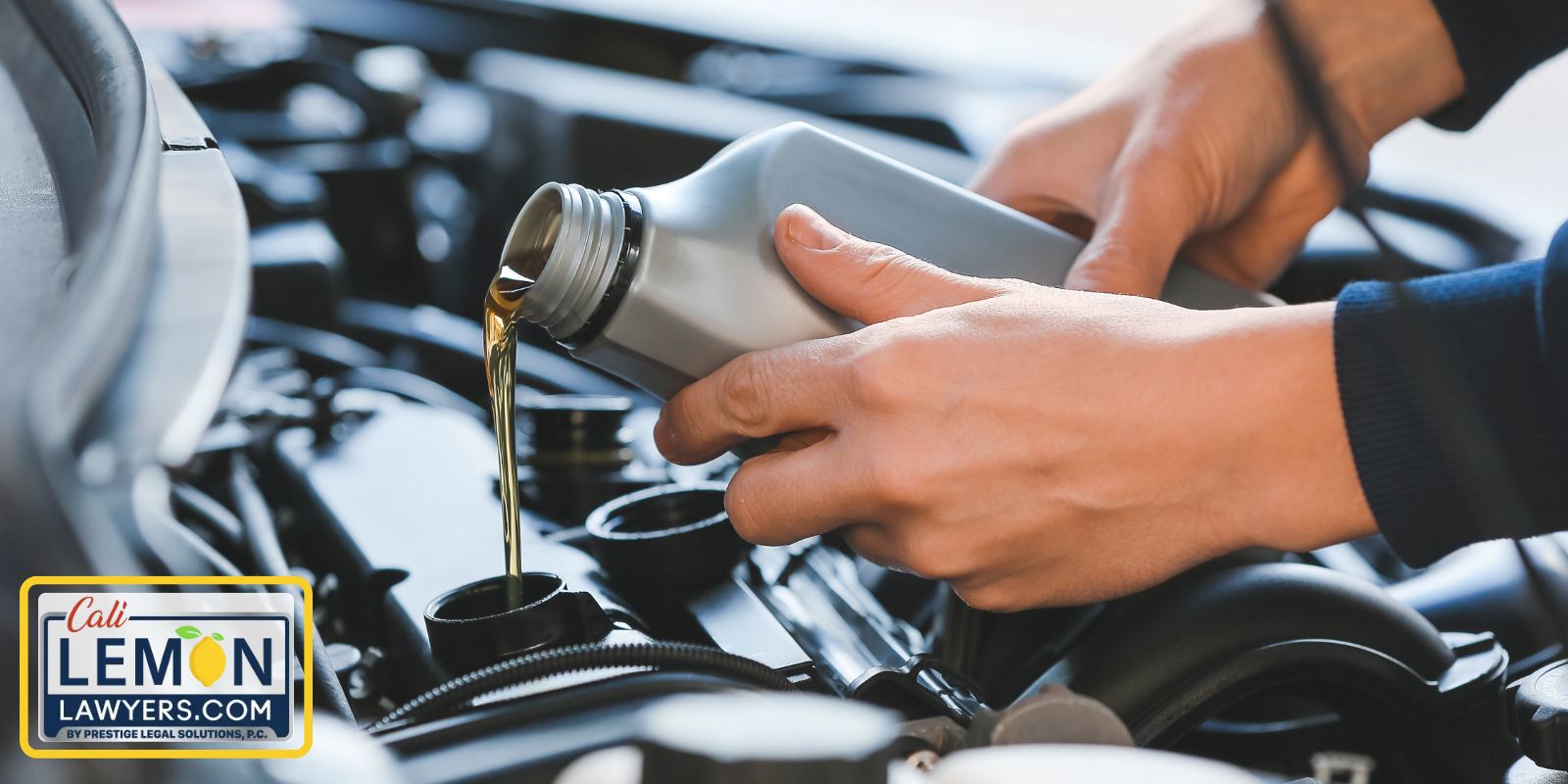
How Much Oil Does My Car Need?
Maintaining the proper oil level in your car is extremely important for engine health. But with so many different car models and engines, how can you know exactly how much oil your car needs? The answer is that the amount of oil varies and can’t be determined by others. In this article, we’ll answer the question, “How much oil does my car need?” We’ll also talk about why having the right oil level is important. Too much or too little oil can result in costly and permanent engine damage. So, before neglecting this essential car maintenance task, remember that an oil change is cheap and avoiding it can have harmful consequences.
If you’ve purchased or leased a defective car with engine problems, we can help you receive compensation at no cost to you. Contact Cali Lemon Lawyers today!
How Do I Know How Much Oil I Need for My Car?
There are multiple ways to determine how much motor oil is needed. Here are a few recommendations.
Check the Car’s Owner’s Manual
The owner’s manual of your vehicle has detailed specifications, including the oil and fluid capacities.
Additionally, the car’s service manual has information about the motor oil capacity and instructions on changing it. You won’t be given this manual when you purchase a car. It’s a separate purchase that can be a little pricey but offers invaluable information.
Check the Dipstick
If you pull out the dipstick, you’ll see how much oil is in the system right now. You want the dipstick level to be at the FULL mark.
You can slowly add some oil until it gets to the mark. You’ll need a different amount of oil depending on how low it is.
Factors Affecting the Amount of Motor Oil Needed
Every car requires a different amount of oil, which we’ve briefly touched on earlier. But what makes the amount of oil required different? Here are a few of the most common factors.
Age and Model of Car
If you are driving a pickup truck, your vehicle will probably need more oil than a compact coupe. This is probably the most significant factor affecting how much oil is used.
Age can also play a role in how much oil is needed. Older cars can go through more oil than a newer model with advanced technology.
Driving Conditions
How you drive won’t change the overall capacity of oil, but it affects how often it needs to be topped off. If you are driving short distances, the oil is going to require more frequent changes.
Longer highway drives help keep the oil in better condition. Additionally, the oil will break down faster if you tow or haul heavy loads.
Type of Oil Needed
While this won’t necessarily affect how much oil you need, it’s still important to know. There are multiple types of oil, each with a different longevity. Here are the main types of oil:
- Conventional oil: needs to be changed more frequently, as often as 3,000 miles
- Synthetic blend oil: a mixture of synthetic and conventional
- Synthetic oil: go longer between oil changes, usually up to 15,000 miles
- High-mileage oil: includes special additives to extend engine life
Most cars benefit from using synthetic oils versus conventional oils. Not only do they offer more protection to the engine parts, but it doesn’t need to be changed as often.
Vehicle’s Engine Size
The size of the engine plays a big part in how much oil it holds. Most cars hold four to eight quarts of oil. Here’s an approximation.
- Four-cylinder engine: 4-5 quarts
- Six-cylinder engine: 5-6 quarts
- Eight-cylinder engine: 5-8 quarts
Signs That Your Car May Not Have Enough Oil or Need an Oil Change
How do you know when your engine needs more oil? There are some tell-tale symptoms to watch for.
Oil Pressure Warning Light
Most cars have an oil pressure sensor that tells when the fluid or pressure is low. At the first sign of this light, you want to check the oil level.
You may simply need to add more oil. Otherwise, you might want to perform an oil and filter change if it appears dirty or contaminated.
Clunking Sound
When the oil runs low, the engine no longer gets the lubrication it needs. Without oil running through all of the passageways, you may start to hear a clunking. It’s also possible to hear grinding or knocking.
Allowing your vehicle to run with low oil is a recipe for disaster. The rods can break, causing extensive damage.
Burning Oil Smell
If you smell oil burning, it could indicate a leak. With a leak dripping oil on the hot engine components, it’s going to smell like burning.
When the engine is leaking, there’s less oil in the system. If you let it go, the oil could become dangerously low.
Decreased Fuel Efficiency
The engine only runs efficiently when it has the right amount of oil in it. Otherwise, the engine is going to struggle to operate.
With the engine oil low, efficiency diminishes. The harder the motor has to work, the more you will notice problems at the gas pump.
Overheating
We discussed the need for lubrication earlier when we talked about strange noises. However, the lack of lubrication also causes trouble with temperature control.
As parts rub together, friction and heat rise. Left unchecked, the engine can start to overheat when the oil gets too low.
Can I Trust the Oil Life Indicator?
The oil life monitor doesn’t actually measure the health of the oil. Instead, figure it as an estimator instead. This system isn’t looking at the physical properties of the oil but is using the data provided to determine when the oil may need to be changed.
This system only uses an algorithm to determine when it might be time to change the oil and oil filter. Still, you should check the oil when it comes on to figure out if an oil change would be required.
How to Add Oil to Your Car
You don’t have to be a mechanic to put oil in the car. Here are some basic steps to follow.
- Gather your supplies. You need the correct oil viscosity, as determined by the manufacturer and a funnel. It’s also helpful to have shop rags on hand.
- Park your vehicle on level ground.
- Turn off the engine and wait for ten minutes until all of the oil drains.
- Open the hood and locate the dipstick. It’s near the engine and usually has a bright handle.
- Pull out the dipstick and wipe it on a rag.
- Place the dipstick back into the tube.
- Read the level, so you know how much oil to add.
- There’s no reason to add more oil if it’s between the MIN and MAX lines.
- If oil is needed, place your funnel in the appropriate opening in the engine.
- Add oil by putting in a quarter of the quart at a time. Give it time to drain into the pan and recheck it.
- Continue adding in small intervals until there’s enough oil.
If you perform an oil change, dispose of the old oil properly. Most auto parts stores will take used oil.
Conclusion
It’s vitally important that your car has the right amount of oil in it. Check the oil levels often and fill them up when needed. You can protect the vehicle from catastrophic failure by taking just a few minutes to check the oil and consult the owner’s manual for other maintenance guidance.





